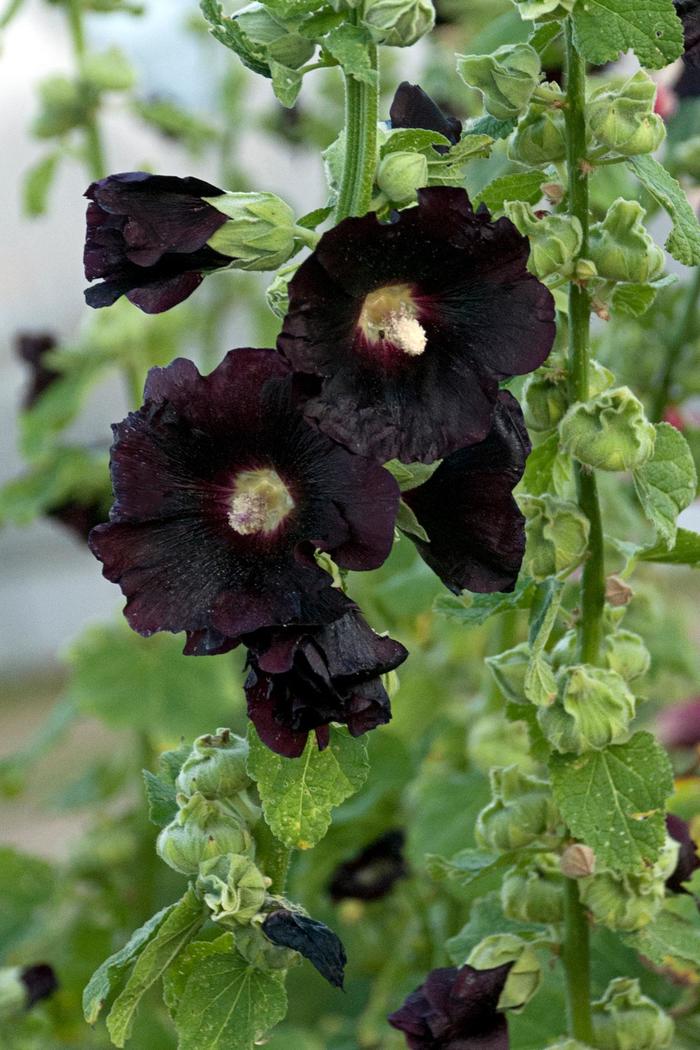« Previous Plant | Next Plant »
Alcea rosea (Hollyhock)
Spotlight™ 'Blacknight'
Hollyhocks provide excellent architectural height in the garden and make good backdrops for lower growing perennials. Try growing them in the cottage garden style by planting them up against a wall or picket fence. Though their stalks are very strong, they may need to be staked if they are planted in a windy site. Hollyhocks prefer rich, moist, well-drained soil but can tolerate short periods of drought. They need full sun to really perform in the landscape. Watch for Japanese Beetles; this plant is one of their favorites!
- » Striking, dark purple flowers
- » Flowers on tall, sturdy stalks
- » Perennial?not biennial!!
- » Ideal for sunny gardens
Common Name: Hollyhock Deep black-purple, single flowers are produced on tall, sturdy stalks in midsummer. For over 18 years, Jelitto worked to develop a consistent strain of stable, straight color, single flowered Hollyhocks. The Alcea rosea Spotlight Series was introduced by Jelitto in 2010 with multiple single color strains including deep black-purple, red, pink, yellow, and white. Other than their fabulous blossoms, one of the best traits about this series is that the plants are truly perennial, not biennial. Feel free to grow hollyhocks under Black Walnut trees; they are tolerant of the toxic juglone that is emitted through the trees' roots.
- Height
- 5 - 6 ft
- Spread
- 1 - 2 ft
- Zone
- 3-9
- Color
- Purple
- Categories
- Perennial
- Tags
- Attracts Butterflies; Attracts Humming-birds; Border or Bed; Cut Flower/Foliage; Mass Planting; Full Sun
Check back soon for additional information on Spotlight™ 'Blacknight'.
Common Name: Hollyhock Deep black-purple, single flowers are produced on tall, sturdy stalks in midsummer. For over 18 years, Jelitto worked to develop a consistent strain of stable, straight color, single flowered Hollyhocks. The Alcea rosea Spotlight Series was introduced by Jelitto in 2010 with multiple single color strains including deep black-purple, red, pink, yellow, and white. Other than their fabulous blossoms, one of the best traits about this series is that the plants are truly perennial, not biennial. Feel free to grow hollyhocks under Black Walnut trees; they are tolerant of the toxic juglone that is emitted through the trees' roots.
